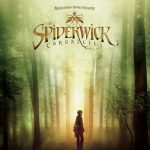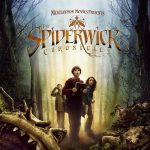Sleepwalkers (1992)

“Sleepwalkers,” directed by Mick Garris and released in 1992, is a supernatural horror film based on an original screenplay by Stephen King. It combines elements of classic horror with an eerie small-town setting, injecting a dose of surrealism and camp into its narrative. The movie stands out for its bizarre premise, dark humor, and blend of fantasy and horror, though it’s also known for its mixed reception and offbeat execution.
Suggested videos for you:
Plot Summary
The story follows Charles Brady (Brian Krause) and his mother Mary (Alice Krige), a pair of “sleepwalkers” who are shape-shifting creatures resembling humanoid cats. They survive by feeding on the life force of young women, which complicates their attempts to live a quiet life. Charles and Mary have a peculiar relationship, as she is both his mother and romantic partner, highlighting the film’s disquieting take on taboo subjects. After moving to a new town, they set their sights on Tanya Robertson (Madchen Amick), a kind-hearted high school girl who works at a local theater.
Charles begins to woo Tanya, masking his true intentions as he gains her trust. However, Tanya gradually realizes something is amiss, and the climax unfolds as she and the townspeople discover the horrifying truth about Charles and Mary’s monstrous nature. Throughout the film, cats play a significant role as natural enemies of sleepwalkers, leading to numerous scenes where cats gather ominously around the mother-son duo’s home, foreshadowing the impending confrontation.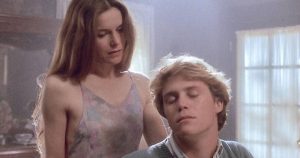
Themes and Tone
The film explores themes of predation, forbidden love, and monstrous identity, but does so through an unusual lens. The tone is unsettling, combining horror elements with moments of dark humor and self-awareness. It presents its monsters with a certain degree of sympathy, focusing on their struggle for survival while making their gruesome nature clear. There’s a juxtaposition between suburban normalcy and the nightmarish existence of the sleepwalkers, evoking the “hidden evil in small towns” trope common in horror cinema.
Characters and Performances
Brian Krause delivers a memorable performance as Charles, navigating his character’s dual roles of charming teenager and menacing predator. His chemistry with Madchen Amick’s Tanya is convincing, capturing a budding teenage romance that slowly turns sinister as Charles’ darker side is revealed. Madchen Amick’s portrayal of Tanya brings a touch of innocence and resilience to the film, making her a sympathetic character caught in a dangerous situation.
Alice Krige stands out as Mary Brady, balancing both maternal and monstrous aspects with an eerie sensuality that underlines the character’s complex bond with her son. Her performance adds depth to the horror, as she oscillates between overprotective mother and predatory creature with ease. The unconventional mother-son relationship, tinged with incestuous undertones, creates an extra layer of discomfort, challenging viewers with a portrayal of love that is as grotesque as it is fascinating.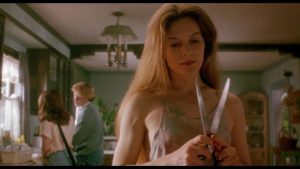
Visuals and Special Effects
“Sleepwalkers” uses practical effects to bring its supernatural elements to life, particularly the transformation sequences and scenes of the sleepwalkers’ monstrous cat-like forms. While some effects might appear dated by today’s standards, they contribute to the film’s distinct 1990s horror aesthetic. The creature design, particularly the exaggerated feline features, is both unsettling and memorable, leaning heavily into horror’s tradition of body horror and transformation.
The film’s cinematography captures the small-town atmosphere effectively, adding a sense of claustrophobia as the horror gradually infiltrates this otherwise ordinary setting. Garris employs various camera angles and lighting techniques to heighten the suspense, and the use of dark, muted colors complements the film’s macabre tone.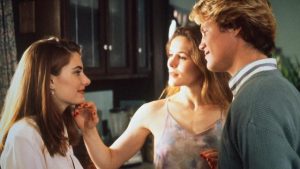
Reception and Criticism
At the time of its release, “Sleepwalkers” received mixed to negative reviews. Critics were divided over its unusual premise, controversial themes, and sometimes campy tone. Some praised it for its unique concept and willingness to push boundaries, while others felt that its over-the-top nature detracted from its effectiveness as a horror film. However, it has since gained a cult following among fans of Stephen King adaptations and 1990s horror, appreciated for its unapologetic approach to genre conventions and its memorable characters.
One frequent criticism is that “Sleepwalkers” struggles to balance horror with moments of black comedy, which can make the tone feel uneven. Certain scenes lean heavily into camp, which, depending on the viewer’s expectations, can either enhance or detract from the viewing experience. The film’s taboo themes, particularly the mother-son relationship, remain polarizing, adding to its reputation as a divisive piece of horror cinema.
Legacy and Impact
While “Sleepwalkers” may not be one of Stephen King’s most celebrated adaptations, it stands out for its bizarre premise and memorable villainous duo. Over the years, it has found an audience that appreciates its distinctiveness, relishing its blend of horror, fantasy, and camp. Its creature design and portrayal of sleepwalkers as cat-like, life-sucking entities add an original twist to supernatural lore, making it a unique entry in 1990s horror.
Conclusion
“Sleepwalkers” is an unconventional horror film that marries grotesque horror with campy, surreal elements. Its story of monstrous outsiders posing as an ordinary family injects a layer of satire, while the intense relationship between Charles and Mary adds to the film’s dark allure. While it may not be for everyone, “Sleepwalkers” offers a unique and unsettling experience for fans of horror willing to embrace its strange and sometimes disturbing narrative choices. Its status as a cult classic cements it as an intriguing piece of 1990s horror, with enough originality to warrant revisiting for fans of Stephen King’s darker, more experimental stories.






